Welcome to Green Thumbs: Your Gardening Introduction Guide! If you’ve ever thought about starting a garden but don’t know where to begin, you’ve come to the right place. This guide is designed for beginners, providing a comprehensive overview of gardening basics, including soil preparation, planting, watering, and maintenance. By following the steps outlined in this guide, you’ll be well on your way to creating a beautiful and thriving garden!
Key Takeaways
- Choose the right location for your plants
- Soak roots in water before planting
- Provide proper fertilization
- Set reminders for watering and pay attention to your plants’ needs
- Light, soil drainage, and moisture are critical for plant care
Why Start a Garden?
Gardening is not only a rewarding hobby but also a fantastic way to connect with nature and create a beautiful oasis right in your own backyard. As a beginner, getting started with gardening might seem daunting, but it offers a range of benefits that make it worth the effort.
One of the most significant benefits of gardening for beginners is the sense of accomplishment and fulfillment that comes from watching your plants grow and thrive under your care. Whether you’re growing flowers, herbs, or vegetables, seeing the fruits of your labor can be incredibly satisfying, and it can boost your mood and overall well-being.
Gardening can also be a therapeutic and stress-relieving activity, providing relaxation and a sense of tranquility. Spending time outdoors and connecting with nature can help you recharge and unwind, reducing stress and anxiety. Gardening can also be a great way to improve your physical health by promoting physical activity and helping you stay active and healthy.
There are also practical benefits to starting a garden. For example, growing your own produce and herbs can provide a source of fresh, healthy food that can contribute to a more sustainable lifestyle. Additionally, gardening can be a fun and rewarding activity to enjoy with your family and friends, fostering a sense of community and connection.
Overall, gardening for beginners offers a multitude of benefits that make it a worthwhile pursuit. Whether you’re looking to create a beautiful outdoor space or simply connect with nature, starting a garden is an excellent way to experience the many rewards of this enjoyable and fulfilling hobby.
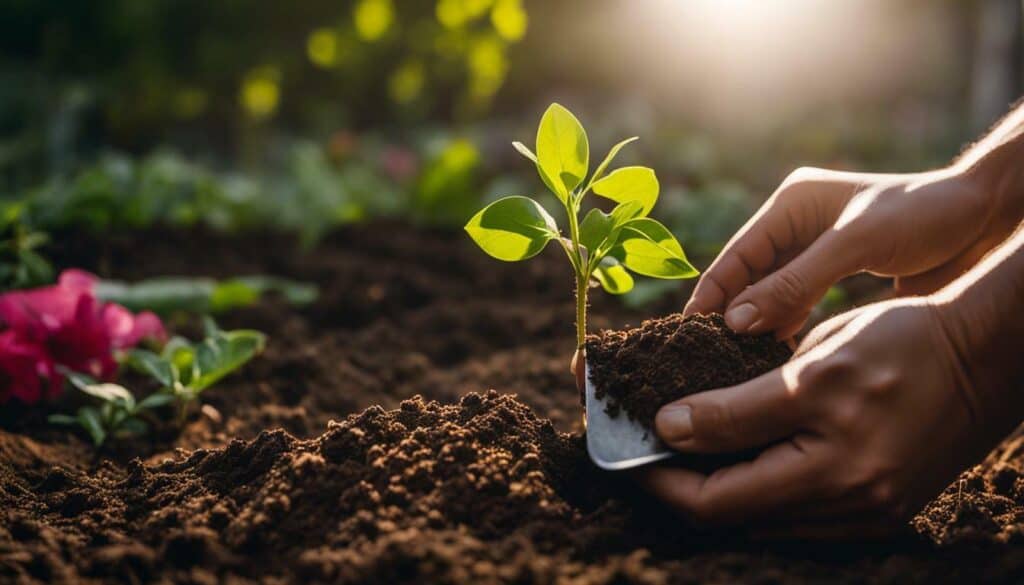
The Basics of Gardening
Before you dive into the world of gardening, it’s essential to understand the basics. Gardening is a rewarding and fulfilling hobby, but it requires patience, dedication, and a willingness to learn. With the right guidance and knowledge, even beginners can successfully cultivate a thriving garden.
The basics of gardening revolve around selecting the right plants, providing them with proper care and maintenance, and creating an overall visually appealing garden design. Here are some essential gardening tips to keep in mind:
| Gardening Basics | Introduction to Gardening Techniques |
|---|---|
| 1. Select plants that are appropriate for your climate and soil type. | 1. Ensure good soil drainage to prevent waterlogging and root rot. |
| 2. Learn about the sunlight and water requirements for each plant. | 2. Provide appropriate watering and irrigation to prevent dehydration or overwatering. |
| 3. Properly plant each seedling or transplanting by digging a hole appropriate to the plant’s root system. | 3. Nurture plants through fertilization and pest control. |
| 4. Pay attention to your plants’ needs and set reminders for watering and fertilization. | 4. Prune for optimal growth and to prevent overcrowding. |
| 5. Create an overall visually appealing garden design. | 5. Learn to harvest and preserve garden produce. |
Remember to get to know your plants and pay attention to their specific needs. Providing adequate light and ensuring proper soil moisture are also essential factors to consider. With these basics in mind, even beginner gardeners can successfully cultivate their green thumb.
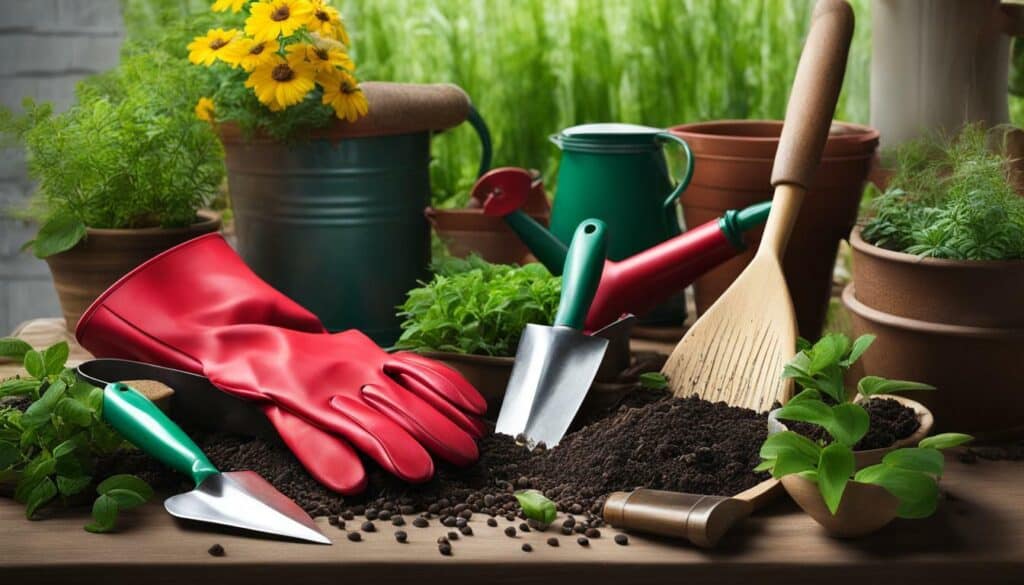
Selecting the Right Plants
When starting your own garden, one of the most exciting aspects is choosing the plants that will thrive in your unique environment. However, selecting the right plants requires careful consideration and understanding of their needs. That’s why it is important to choose a reputable source that provides detailed planting and care instructions.
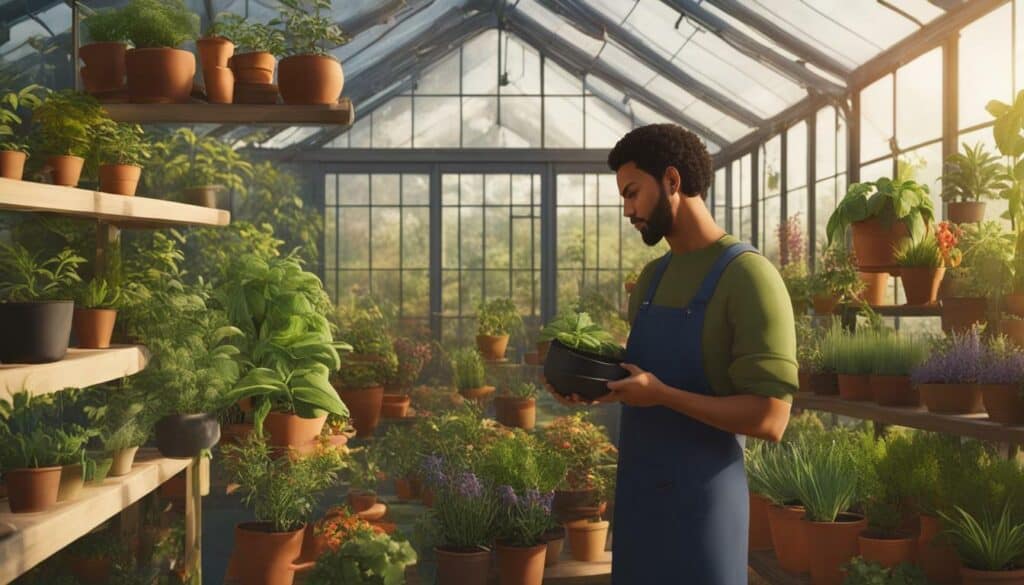
Before planting, make sure to soak the plant’s roots in water for a few hours. This will help prevent the roots from drying out and prepare them for their new environment. When selecting a location for your plant, ensure that it will receive at least 6 hours of sunlight per day, unless otherwise noted.
| Tip | Instruction |
|---|---|
| Digging the hole | Make it large enough to accommodate the plant’s root system and incorporate soil amendments if necessary. |
| After planting | Tamp down the soil and add a layer of mulch around the base of the tree. This will help retain moisture and regulate soil temperature. |
| Watering | Keep the soil moist but not soggy, watering regularly during dry weather. It is also important to know the signs of overwatering or underwatering, as yellow leaves may indicate too much water and curled, brown leaves may indicate too little water. |
| Pruning | Pruning is also necessary for the stimulation and shaping of the plant, but it is important to know the right time to prune based on the location. Taking the time to understand and care for your plants will lead to a successful garden. |
Remember to take the time to understand and care for your plants. This will ensure a healthy and thriving garden. With these gardening tips for beginners, you can create a beautiful outdoor space that will bring you joy and satisfaction for years to come.
Planting and Care Instructions:
Now that you’ve selected your plants, it’s time to roll up your sleeves and get your hands dirty. To ensure successful growth and maintenance, it’s important to follow proper planting and care instructions.
Start by soaking the plant’s roots in water for about an hour before planting to prevent shock. Choose a location that receives the appropriate amount of sunlight for your plant. Dig a hole about twice the width of the root system and remove any grass or debris in the area. Turn the soil in the hole and mix in any necessary amendments.
| Key Instructions: | Tips: |
|---|---|
| Spread out the roots of the plant in the hole and ensure it is planted at the same depth as it was in its container. | Don’t pack down the soil too heavily to avoid damaging the roots. |
| Fill the hole with soil and gently tamp it down to remove any air pockets and ensure the plant is stable. | Consider adding a layer of mulch around the base of the tree to help retain moisture. |
| Water the tree regularly, keeping the soil moist but not soggy. | Avoid over-fertilizing, as this can damage the tree’s roots. |
| Prune the tree as needed for stimulation, survival, and shaping purposes. | Use clean and sharp pruning tools to avoid damaging the tree’s bark. |
Following these essential gardening tips and instructions will help you achieve the best results with your plants. Remember to read and understand the care instructions for each specific plant to ensure it thrives in its new environment.
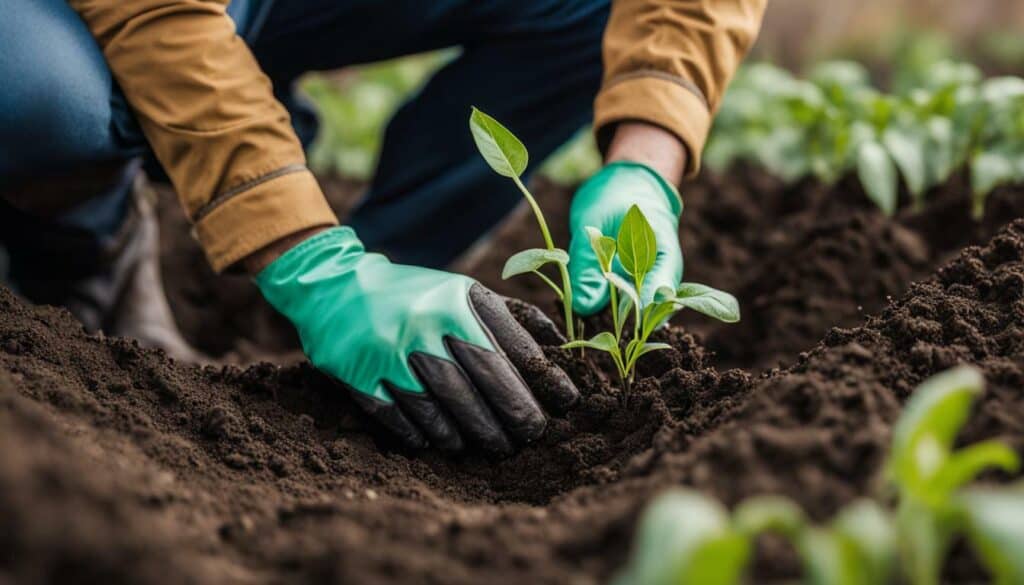
Common Questions and Troubleshooting
As a beginner gardener, it’s natural to have questions and encounter challenges along the way. Don’t worry, you’re not alone! Here are some common questions and troubleshooting tips to help you maintain healthy plants:
| Question | Troubleshooting Tip |
|---|---|
| What should you do if you can’t plant a new tree right away? | Store the tree in a cool place and keep the roots moist until planting. |
| Why do leaves turn yellow or curl and turn brown? | Yellowing leaves can indicate overwatering or underwatering, while curling and browning can indicate pests or diseases. Consult a gardening guide or expert for a more specific diagnosis. |
| How long does it take for dormant trees to show new growth? | It can take several weeks or months for a dormant tree to show new growth, depending on the species and climate. |
| Is pruning necessary? | Pruning can help promote healthy growth and remove dead or damaged branches, but be sure to do it correctly according to the plant species and timing. |
To ensure healthy plants, set a reminder to water them regularly, get to know your plants and their specific needs, provide adequate light and soil drainage, and monitor soil moisture. By following these guidelines, even beginners can develop a green thumb and successfully care for their plants.
Remember, gardening takes patience and practice, but the rewards are worth it. Don’t be afraid to ask for help or seek out resources like gardening guides or local gardening clubs. With determination and a little bit of knowledge, you’ll be on your way to a thriving garden in no time!
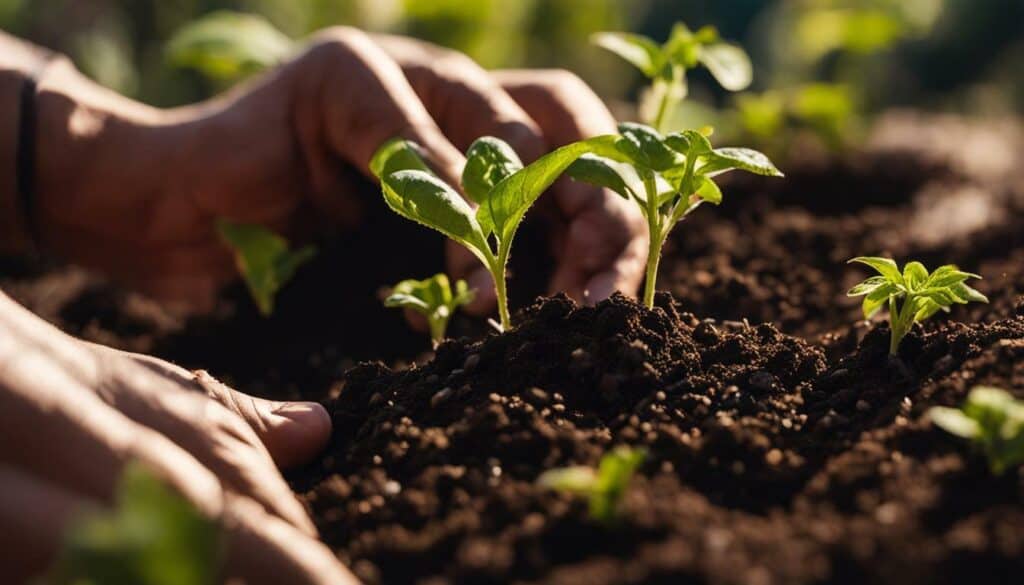
Introducing Green Thumbs Garden
We are proud to introduce you to Green Thumbs Garden, a trusted family-owned garden supply company. Green Thumbs Garden is committed to connecting locally sourced growers to customers, making the world more beautiful one yard at a time. The company offers a wide variety of superior trees and shrubs at competitive prices, delivered directly to your door.
Green Thumbs Garden provides planting and care instructions to help ensure your success and is constantly trying to grow and expand their offerings. We value customer success and encourage you to email us with any questions or concerns.
When planting your trees or shrubs, we advise allowing plant roots to soak in water before planting, choosing a location with at least 6 hours of sunlight, digging a hole large enough for the root system, and adding soil amendments. We also recommend fertilizing with caution and spreading mulch around the base of the tree. The soil should be kept moist but not soggy, and trees should be watered every 7 to 10 days during dry weather.
We have answers to frequently asked questions about planting and caring for trees, and our team is happy to provide additional tips and advice upon request. Green Thumbs Garden is located in Warren County, where more than 300 nurseries operate due to the area’s fertile soil and mild climate.
Visit our website to learn more and sign up for our mailing list to receive exclusive discounts. Let us help you create the beautiful garden of your dreams!
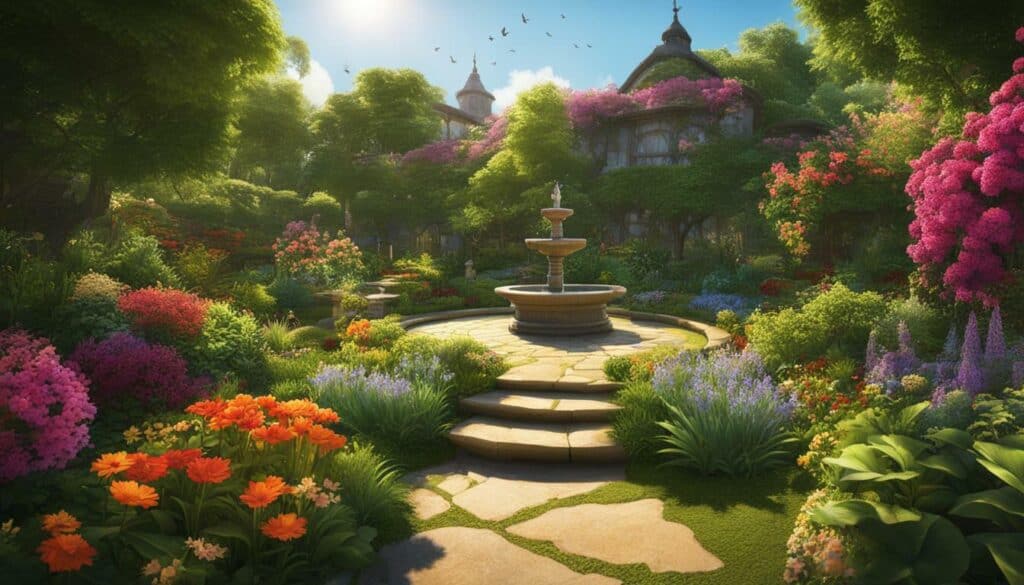
Enhance Your Garden with Green Thumbs Garden
Whether you’re a beginner or an experienced gardener, Green Thumbs Garden is here to support and enhance your gardening journey. As a family-owned garden supply company, their mission is to make the world more beautiful, one yard at a time. With superior trees and shrubs at competitive prices, Green Thumbs Garden is your one-stop-shop for all your gardening needs.
When it comes to planting and care, Green Thumbs Garden recommends soaking the plant’s roots before planting to ensure proper hydration. You should also choose a location with sufficient sunlight and provide proper fertilization to promote healthy growth. If you encounter common issues such as wilted or yellowing leaves, their website offers helpful advice on how to address these problems.
For those looking to prune their trees, Green Thumbs Garden recommends doing so at least once per year. They provide tips on when and how to prune to ensure your trees remain healthy and vibrant.
Located in Warren County, Tennessee, Green Thumbs Garden is ideally situated in a region known for its fertile soil and thriving nursery industry. Their website and online stores provide additional resources, tools, and products to help you achieve your gardening goals.
Enhance your garden with the help of Green Thumbs Garden, and experience the joy and beauty of a flourishing green space.
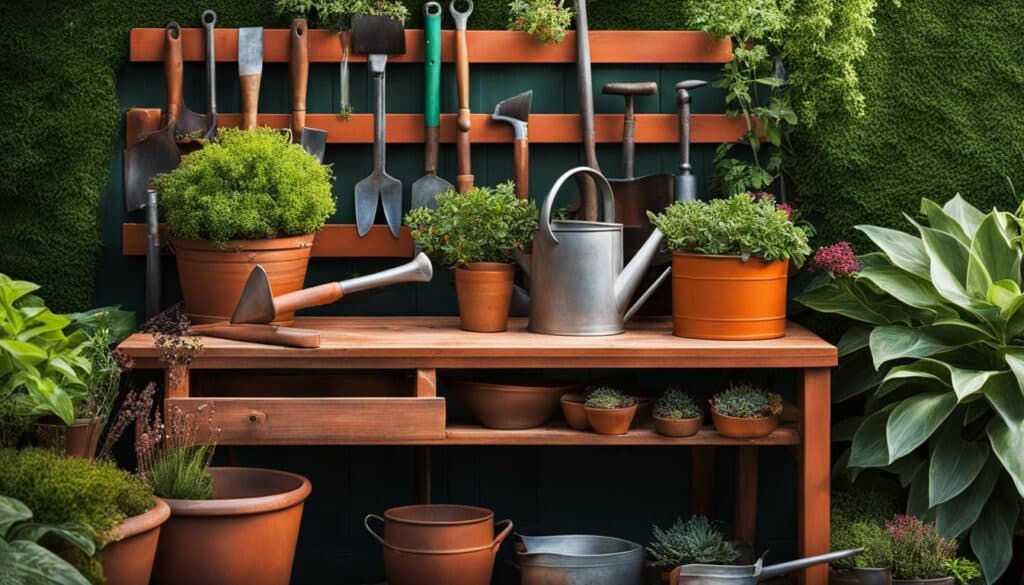
Tips for Successful Gardening
As you embark on your gardening adventure, keep these helpful tips in mind to set yourself up for success:
- Giving your plant roots a good soak: Soaking your plant roots in water for at least 2-4 hours before planting can help ensure proper hydration and prevent transplant shock.
- Choosing the right location: Most plants require at least 6 hours of sunlight per day, so be sure to choose a location that provides adequate light.
- Digging the right size hole: Dig a hole that is large enough to accommodate your plant’s current root system, with some extra room to grow.
- Prepping the planting area: Remove any grass within a 3-foot circular area, turn the soil in a 3-foot diameter area, and add any necessary soil amendments to aid root growth.
- Spreading out the roots: Spread out your plant’s roots to encourage outward growth and keep the plant vertical in the planting hole.
- Refilling the hole: Refill the hole with soil, making sure to cover only up to the original dirt line.
- Tamping soil: Gently tamp out any air pockets from the soil without over-packing it.
- Adding protective mulch: Spread protective mulch two inches deep in a 3-foot diameter area around the base of the tree, but not touching the trunk.
- Keeping soil moist: Keep the soil and mulch around your trees moist but not soggy, watering every 7 to 10 days during dry weather.
- Avoiding fertilizers: Avoid adding fertilizer, potting soil, or any chemicals to your tree in the first year. If fertilizing in the second year, do so before mid-April.
- Paying attention to the leaves: Pay attention to the leaves of your plants, as yellow leaves can indicate too much water and curled, brown leaves can indicate too little water.
- Pruning your plants: Prune your tree at least once a year, starting after the first year. The best time to prune depends on your location, with late fall or early winter being ideal for warmer parts of the country and late winter for colder regions.
In addition to these tips, it is important to get to know your plants by observing their growth and needs. Setting reminders for consistent watering can also help prevent over or under-watering. Providing adequate light, ensuring proper soil drainage, and regularly checking the moisture of the soil are other important factors to consider for successful gardening.
Gardening and Your Well-being
Gardening isn’t just about cultivating beautiful plants; it can also have a profound effect on your overall well-being. Studies have shown that spending time in nature can reduce stress, anxiety, and depression. Gardening provides an opportunity to connect with nature and to disconnect from the stresses of daily life. It also gives you a sense of accomplishment as you watch your plants grow and flourish.
As a beginner gardener, it is important to understand the basics of proper plant care. Follow planting instructions carefully and choose plants that are suitable for your climate and soil type. Providing your plants with adequate water and nutrients is crucial for their health and growth. Setting reminders and getting to know your plants will help you establish a regular watering routine and meet their specific needs.
Light and soil drainage are also important factors in maintaining healthy plants. Pay attention to signs of droopy leaves or new growth to determine if your plants require any adjustments. By incorporating gardening into your routine, you can enjoy the rewards of nurturing nature and creating a beautiful, thriving garden.
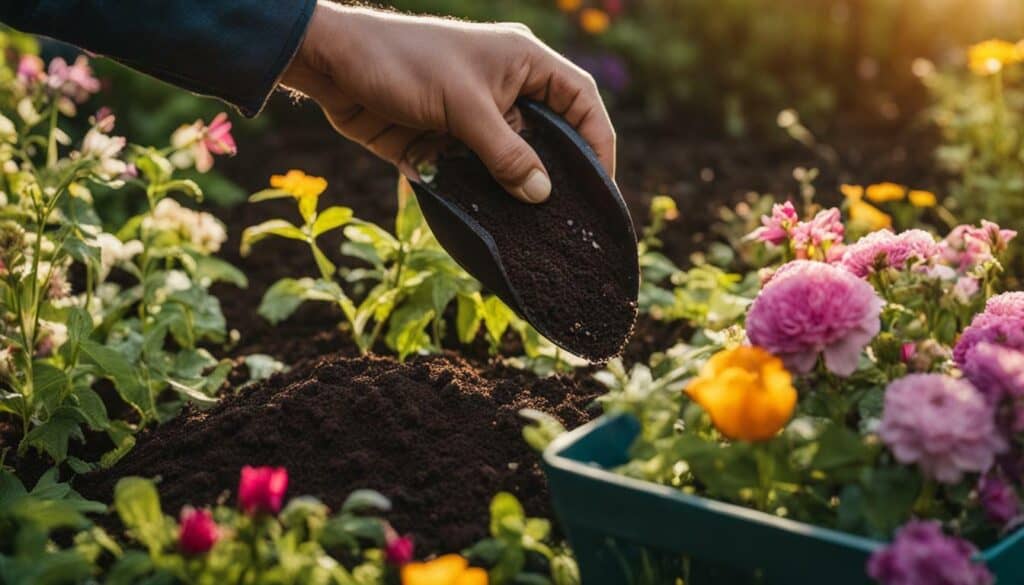
So why not grab a shovel and start planting? Gardening can not only beautify your surroundings, but it can also improve your mental and physical well-being. With a little patience, care, and attention, you can create a garden that not only looks beautiful but also makes you feel good.
What is the Difference Between “Your Friendly Guide to Green Thumbs” and “Welcome to Green Thumbs: Your Gardening Introduction Guide”?
What is the Difference Between Your friendly guide to green thumbs and Welcome to Green Thumbs: Your Gardening Introduction Guide? These two titles convey similar messages but vary in presentation. While both emphasize guidance for green thumbs, Your Friendly Guide to Green Thumbs suggests a personal approach, appealing to beginners seeking a warm, helpful resource. Conversely, Welcome to Green Thumbs: Your Gardening Introduction Guide implies a formal introduction to gardening, targeting individuals interested in a comprehensive overview.
Conclusion
Congratulations! You are now equipped with the knowledge and inspiration to embark on your gardening journey. Gardening can be a great way to connect with nature, reduce stress, and enjoy the beauty of plants. By following the tips and techniques covered in this guide, you can set yourself up for success and watch your garden thrive.
Remember, gardening requires attention and care. You will need to set reminders for watering, get to know your plants and their specific needs, ensure proper light and soil drainage, and regularly check the moisture levels of the soil. Being observant and making adjustments based on the plant’s behavior will contribute to a thriving and beautiful garden.
Whether you’re a seasoned gardener or just starting out, there’s always more to learn. Continue to research and experiment with different techniques and plants to find what works best for you. With these tips in mind, anyone can develop their green thumb and enjoy the rewards of nurturing nature. Happy gardening!
FAQ
Q: How should I handle wilted plants upon arrival?
A: If your plants arrive wilted, don’t worry! This is common due to shipping conditions. Simply give them a good watering and place them in a shaded area for a day or two to recover before planting.
Q: What should I do if my plant’s leaves turn yellow or curl?
A: Yellow or curling leaves can be a sign of various issues, such as overwatering or nutrient deficiency. Check the soil moisture and adjust your watering accordingly. If the problem persists, consult a local gardening expert for further guidance.
Q: How should I prune my plants?
A: Pruning is essential for maintaining healthy and attractive plants. Start by removing dead or damaged branches. Then, selectively thin out crowded areas to improve airflow and reduce disease risk. Prune back any overgrown branches to shape the plant as desired.
Q: How often should I fertilize my plants?
A: Fertilizing frequency depends on the specific plant and its needs. In general, it’s best to fertilize in early spring before new growth begins and then again in late spring or early summer. Be sure to follow the instructions on the fertilizer package for the correct application rate.
Q: Is it necessary to refill the planting hole with soil?
A: Yes, it is important to refill the planting hole with soil after placing the plant. Gently pack the soil around the roots, ensuring there are no air pockets. This provides stability and support to help the plant establish itself.
Q: Should I spread mulch around the base of my plants?
A: Yes, spreading mulch around the base of your plants offers several benefits. It helps retain moisture, suppresses weeds, and regulates soil temperature. Make sure to leave a small gap around the plant’s stem to prevent moisture buildup and potential rotting.
Source Links
- https://www.greenthumbsgarden.com/pages/planting-instructions
- https://realitydaydream.com/a-beginners-guide-to-a-green-thumb-keeping-plants-alive/
- https://www.amazon.com/Gardening-101-Beginners-Guide-Cultivating/dp/B0CC7QS54Y
- https://www.wormfarmingrevealed.com/brown-thumb-green-thumb-introduction.html
- https://medium.com/@mohammed.touson/gardening-for-beginners-a-comprehensive-guide-to-cultivating-your-green-thumb-8bfd4f73e3a9
- https://njaes.rutgers.edu/fs1211/
- https://loveforgardens.com/what-do-you-mean-by-gardening/
- https://growinginthegarden.com/10-reasons-to-start-a-garden-today/
- https://www.basicsofgardening.com/
- https://www.gardendesign.com/how-to/
- https://www.canr.msu.edu/resources/a_guide_for_the_selection_and_use_of_plants_in_the_landscape_e2941
- https://extension.psu.edu/choosing-plants-wisely
- https://morningchores.com/choosing-garden-plants/
- https://gardenerspath.com/how-to/beginners/growing-plants-101/
- https://www.bhg.com/gardening/yard/garden-care/ten-steps-to-beginning-a-garden/
- https://extension.okstate.edu/fact-sheets/basic-plant-care-understanding-your-plants-needs.html
- https://www.installitdirect.com/learn/common-gardening-questions/
- https://gardening.usask.ca/gardening-advice/diagnostics.php
- https://extension.unh.edu/agriculture-gardens/yard-garden/getting-started-gardening
- https://solbookbox.com/inspiration/green-thumbs-bilingual-brains-gardening-with-kids-for-fun-learning
- https://www.greenthumb.com/the-littlest-green-thumbs-how-to-introduce-kids-to-gardening/
- https://www.orbitonline.com/blogs/learn-and-grow/growing-green-thumbs-a-guide-to-starting-a-school-garden-or-garden-club
- https://www.greenthumbsgarden.com/
- https://donotdisturbgardening.com/tips-for-having-a-successful-garden-beginners-and-experts/
- https://miraclegro.com/en-us/gardening-101/10-top-gardening-tips-for-beginners.html
- https://www.idooworld.com/blogs/news/gardening-and-happiness
- https://link.springer.com/10.1007/978-94-007-0753-5_3967
- https://www.betterhealth.vic.gov.au/health/healthyliving/gardens-for-all-a-health-activity
- https://www.vedantu.com/english/essay-on-gardening
- https://growingourown.wordpress.com/6-conclusion/
- https://imp.center/i/importance-of-gardening-essay-10058/





Leave a Reply